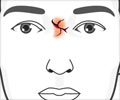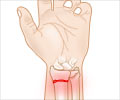A clinical practice guideline (CPG) based on evidence on The Treatment of Supracondylar Humerus Fractures”, has been recently approved and released by AAOS Board of Directors.

Supracondylar humerus fractures are common and likely occur when children are playing, or while climbing trees, jungle gyms and other structures. When young children fall, they tend to hyperextend their arms. As a result they land on a stiff arm, often fracturing the arm, just above the elbow joint.
In addition to the broken bone, the sheer force of this type of fall, may cause "all kinds of consequences," said Dr. Howard. The artery which provides blood to the forearm and hand – runs very close to the elbow, as do the three main nerves of the arm: median, radial and ulnar. As a result, elbow fractures can cause circulation problems, and in 10 to 15 percent of cases, nerve injuries.
This new guideline is the result of a robust review of more than 350 research studies on this topic and includes 14 recommendations on how to stabilize the fracture, remedy circulation problems, and ultimately, ensure the fastest and most comfortable recovery for each child.
Important findings:
- First, the guideline recommends that surgeons stabilize the fracture with "two or three laterally introduced pins to stabilize the reduction of displaced, misaligned, supracondylar fractures of the humerus."
- In addition, the guideline recommends procedures to restore blood flow and circulation if the artery has been stretched, torn or severed. Orthopaedic surgeons know that the first thing to do with an arm without a pulse is to gently realign the arm. Once the fracture is put back into the proper position and established, circulation will likely recover. Advertisement
- However, sometimes there is still no pulse in the arm following realignment. This can occur with or without adequate blood flow. The guideline recommends the surgical "exploration" of the blood vessels and nerves in front of the elbow in patients with no wrist pulse, if the hand remains cold and underperfused (without adequate blood flow), to "ensure survival of the tissues in the arm and hand." In these rare instances, further surgery may be necessary "to prevent rare, but serious, limb threatening and life threatening consequences," according to the guideline.
Advertisement
Source-Eurekalert















